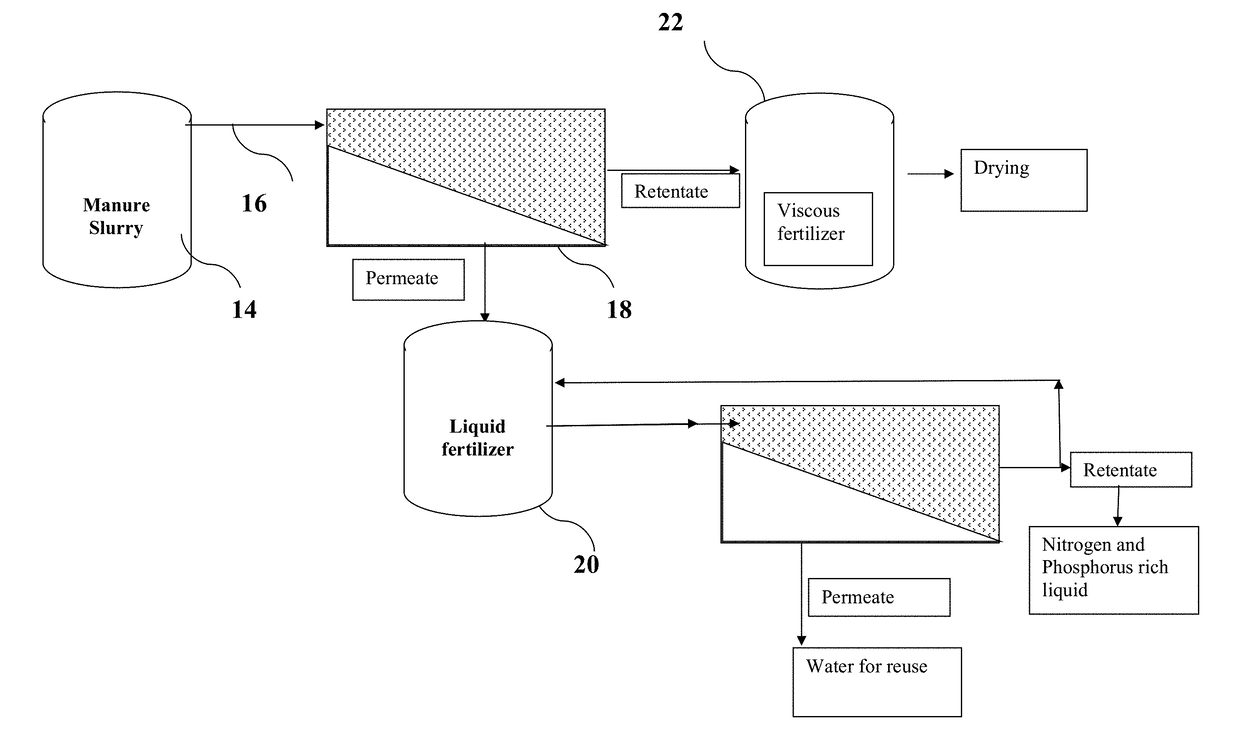Method and systems for isolation and/or separation of target products from animal produced waste streams
a technology for animal products and waste streams, applied in multi-stage water/sewage treatment, membranes, applications, etc., can solve the problems of emotional stress, high concentration of waste that must be removed from confined spaces, and substantial environmental impact, so as to avoid bioactivity and degradation, reduce water content, and reduce environmental impact
- Summary
- Abstract
- Description
- Claims
- Application Information
AI Technical Summary
Benefits of technology
Problems solved by technology
Method used
Image
Examples
Embodiment Construction
[0047]While not to be construed as limiting, the terms used herein have the following definitions unless indicated otherwise.
[0048]The term “manure” refers to any material that includes animal waste and may include but is not limited to water, feed, urine, fecal matter, straw, hay, bedding material, peat moss, and composts.
[0049]The term “cross-flow filtration cassette” refers to a type of filter module or filter cassette that comprises a porous filter element across a surface of which the liquid medium to be filtered is flowed in a tangential flow fashion, for permeation through the filter element of selected component(s) of the liquid medium. In a cross-flow filter, the shear force exerted on the filter element (separation membrane surface) by the flow of the liquid medium serves to oppose accumulation of solids on the surface of the filter element. Cross-flow filters include microfiltration, ultrafiltration, and nanofiltration systems. In a preferred embodiment, the cross-flow fi...
PUM
| Property | Measurement | Unit |
|---|---|---|
| diameter | aaaaa | aaaaa |
| diameter | aaaaa | aaaaa |
| thickness | aaaaa | aaaaa |
Abstract
Description
Claims
Application Information
 Login to View More
Login to View More - R&D
- Intellectual Property
- Life Sciences
- Materials
- Tech Scout
- Unparalleled Data Quality
- Higher Quality Content
- 60% Fewer Hallucinations
Browse by: Latest US Patents, China's latest patents, Technical Efficacy Thesaurus, Application Domain, Technology Topic, Popular Technical Reports.
© 2025 PatSnap. All rights reserved.Legal|Privacy policy|Modern Slavery Act Transparency Statement|Sitemap|About US| Contact US: help@patsnap.com



